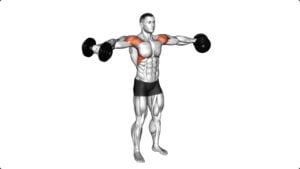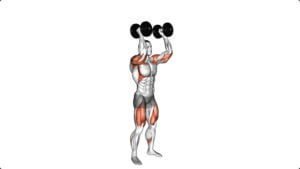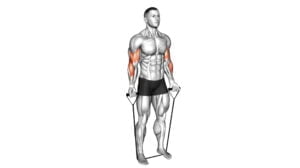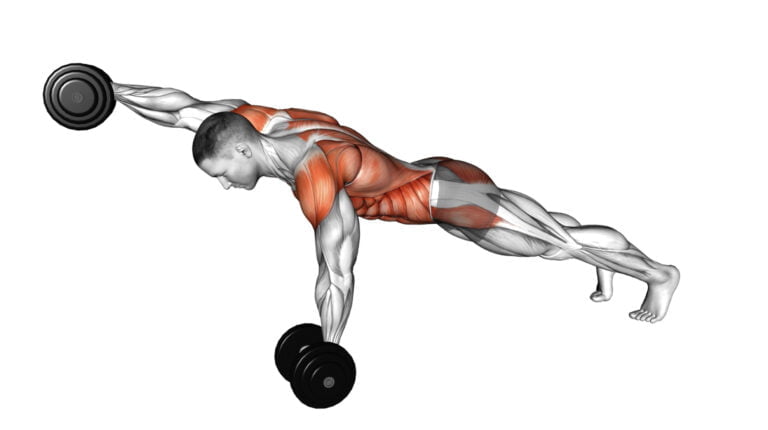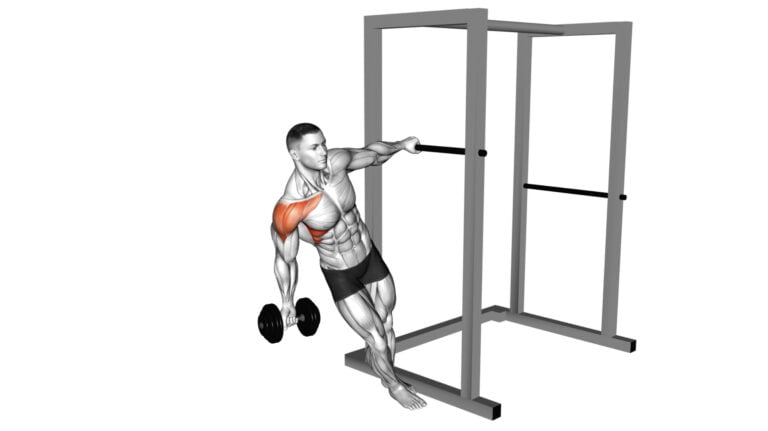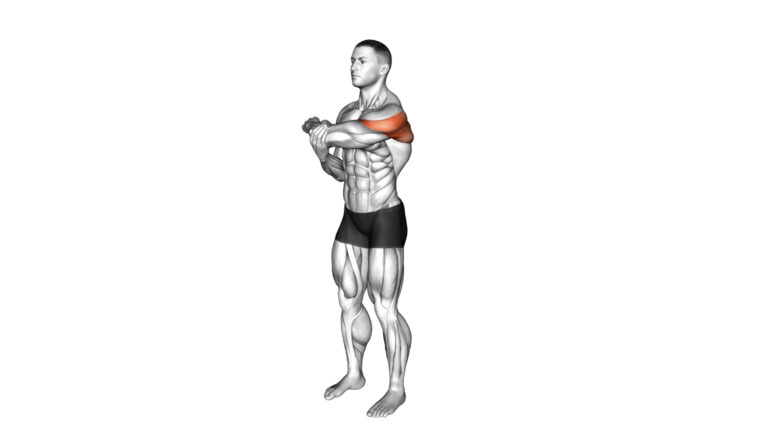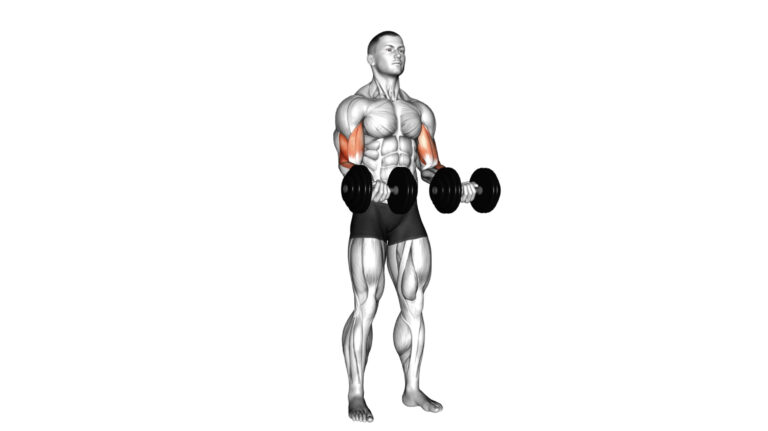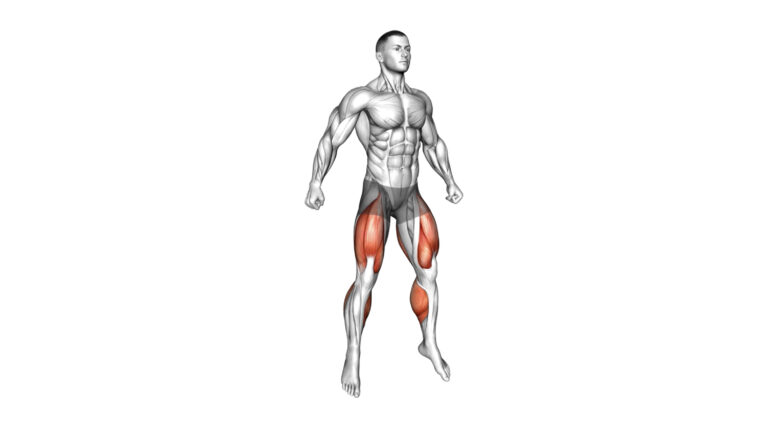5 Best Resistance Band Exercises For Shoulders – Build Sculpted Shoulders Fast
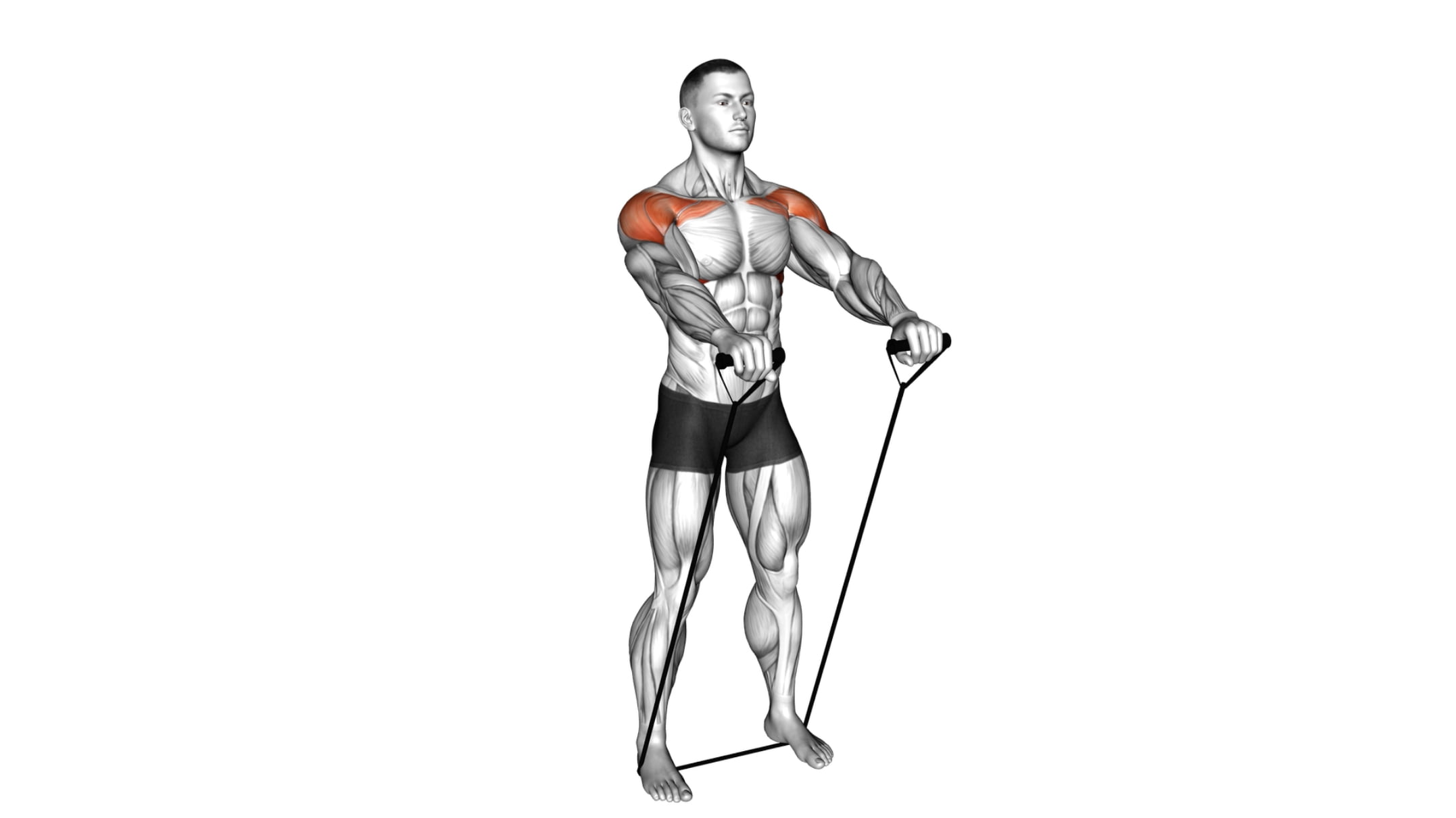
Strong shoulders are pivotal for everyday movements, from lifting groceries to pushing open heavy doors. Yet, many people overlook the importance of shoulder health until a pang of pain signals an issue.
As a seasoned fitness trainer with years of experience in resistance training, I’ve seen firsthand how resistance bands offer a versatile and joint-friendly way to build shoulder strength that caters to all fitness levels.
Delving into the realm of resistance band exercises opens up a world where gym accessibility or bulky equipment no longer binds us; this is crucial in our on-the-go lifestyles. The following guide distills my expertise into five highly effective moves poised to fortify your shoulders like never before — each one meticulously designed for maximum impact without straining the delicate shoulder joint.

Ready? Let’s strengthen and sculpt those shoulders!
Key Takeaways
- Start shoulder workouts with a band behind neck shoulder press to target the deltoid muscles, building strength and stability in the shoulders.
- Use a band bent over rear lateral raise for engaging and strengthening the posterior deltoids while improving mobility and stability.
- Incorporate a band front raise to effectively work on your anterior deltoid muscles using controlled movements for optimal results.
- Implement a band lateral raise regularly to enhance posture, strengthen middle deltoids, and help prevent shoulder injuries.
- Finish with a band seated neutral grip shoulder press to activate various shoulder muscles without straining joints or back.
Why Resistance Bands Are Great for Shoulders

Resistance bands are an excellent choice for shoulder workouts because they provide a safe and low-impact way to build strength and flexibility. They also allow for easy modification, making them suitable for individuals at any fitness level.
Plus, their portability and cost-effectiveness make it convenient to incorporate shoulder exercises into your routine anywhere, anytime.
Safe and low impact
Using resistance bands for shoulder exercises is a game-changer, particularly if you’re concerned about safety or have experienced shoulder pain. These bands provide a gentle yet effective workout that won’t stress your joints like heavy weights might.
The elastic nature of the bands creates resistance without the harsh impact on your rotator cuffs, making it an ideal option for people with previous injuries or chronic conditions such as tendinitis or bursitis.
Exercises designed with exercise bands can help strengthen and protect the intricate muscles around your shoulder blades, including the supraspinatus and infraspinatus. They allow for controlled movements that target specific areas without overloading them.
This low-impact approach is also perfect for warming up before moving on to more intense workouts or as part of rehabilitation after surgery to ensure a steady recovery while minimizing risk of further injury to delicate shoulder joints.
Easy to modify for individual needs
Resistance band exercises for shoulders are a fantastic way to customize your workout to match your own fitness levels and goals. Whether you’re dealing with shoulder injuries or looking to strengthen those rotator cuff muscles, the adaptability of resistance bands comes in handy.
You can easily adjust the tension by shortening or lengthening the band, allowing you to control the intensity of each exercise without needing an assortment of heavy free weights.
The beauty of using exercise bands for shoulders lies in their versatility. If you’re aiming for muscle endurance, go for more repetitions with a lighter band. On days when strength building is your focus, switch to a heavier band that challenges your deltoids and upper arms but avoids straining sensitive joints like elbows and knees.
This tailored approach means that even if you’re working alongside someone else – say a personal trainer or gym buddy – both of you can perform the same movements while targeting individual needs effectively.
Portable and cost-effective
Moving from customizing your workout to considering affordability and convenience, resistance bands tick all the boxes. They are a practical solution for anyone looking to improve their shoulder strength without breaking the bank or needing a lot of space.
You can easily tuck them into a gym bag, suitcase, or even a desk drawer, making it possible to stick with your exercise routine whether you’re at home, in the office, or on the go.
Cost-wise, these bands are far less expensive than traditional weights and gym memberships. This means that building up those rear deltoids and rotator cuff tendons can be done without straining your wallet.
Their versatility extends beyond just cost and portability; they’re an investment in maintaining an effective fitness regimen wherever life takes you.
Top 5 Resistance Band Exercises for Strong Shoulders
Incorporate band behind neck shoulder press, bent over rear lateral raise, front raise, lateral raise, and seated neutral grip shoulder press into your workout routine for strong shoulders.
These exercises target different areas of the shoulder muscles and can be easily modified to suit individual needs.
1. Band Behind Neck Shoulder Press
The Band Behind Neck Shoulder Press targets the deltoid muscles, helping to build strength and stability in the shoulders. Start by stepping onto the resistance band with both feet and hold one end of the band in each hand.
Bring your hands up behind your head, elbows bent, and palms facing forward. Extend your arms straight up overhead, pressing against the resistance of the band. Lower back down with control and repeat for a set number of reps.
This exercise is great for improving shoulder mobility and can be easily adjusted by changing the tension on the resistance band. It’s essential to maintain proper form throughout this movement to prevent strain or injury while effectively working out the shoulders.
2. Band Bent over Rear Lateral Raise
Transitioning from the Band Behind Neck Shoulder Press, the Band Bent over Rear Lateral Raise targets the rear deltoid muscles for a well-rounded shoulder workout. Start by standing with your feet hip-width apart and placing one end of the resistance band under your feet.
Keeping a slight bend in your knees, hinge at your hips to lean forward, ensuring that your back stays straight. With one hand holding onto the other end of the band, raise it out to the side until it reaches shoulder height, then lower back down with control.
This exercise effectively engages and strengthens the posterior deltoids while also activating stabilizing muscles throughout your shoulders and upper back. The controlled movement helps enhance shoulder mobility and stability while promoting balanced muscle development essential for overall shoulder strength and function.
3. Band Front Raise
Perform the band front raise by standing with your feet hip-width apart and positioning the resistance band under your feet. Grasp the bands with an overhand grip, keeping your arms straight and palms facing down.
Elevate the bands in front of you to shoulder level while maintaining a slight bend in your elbows. Lower the bands back down slowly to complete one repetition, engaging your shoulder muscles throughout.
Engage your anterior deltoids effectively by initiating this movement from a neutral position without swinging or using momentum to lift the bands. Adjust the resistance level suitable for gradually increasing strength, focusing on controlled movements for optimal results.
4. Band Lateral Raise
The band lateral raise targets the middle deltoids, helping to widen and strengthen the shoulders. Standing with feet shoulder-width apart, step on the resistance band with both feet, holding one end in each hand.
With arms straight but elbows slightly bent, lift both hands laterally until they reach shoulder height. Slowly lower them back down to complete a rep. This exercise is effective for improving shoulder stability and overall upper body strength.
Performing the band lateral raise regularly can help enhance your posture and improve your ability to perform daily activities that involve lifting or reaching. It’s also an excellent prehabilitation exercise for preventing injuries related to shoulder impingement syndrome and rotator cuff tears.
Implementing this into your routine will lead you towards stronger, more stable shoulders.
5. Band Seated Neutral Grip Shoulders Press
How to perform Band Seated Neutral Grip Shoulders Press?
Sit on a chair with your feet flat on the floor and back straight. Hold the resistance band with both hands, palms facing each other in a neutral grip position. Start with your hands at shoulder height, then press the band upward until your arms are fully extended.
Slowly return to the starting position and repeat for the desired number of reps to engage your shoulder muscles effectively.
As you perform the seated neutral grip shoulders press, focus on maintaining controlled movements throughout to maximize muscle activation. Ensure proper breathing and posture while executing this exercise for optimal results without straining your shoulders or back.
How to Choose the Right Resistance Band

When choosing a resistance band for shoulder exercises, consider the desired resistance level, check the quality of the band, and look for non-slip handles for added safety during workouts.
These factors are crucial in ensuring that you have the right tools to effectively strengthen your shoulders.
Consider desired resistance level
When choosing a resistance band for shoulder exercises, consider the desired level of difficulty to ensure it aligns with your fitness goals. The right resistance allows you to perform the movements with proper form while still challenging your muscles.
It’s essential to select a band that provides enough tension to stimulate muscle growth and strength development without compromising technique.
The resistance level should enable you to complete the recommended sets and reps for each exercise comfortably. Whether aiming for muscle endurance, strength building, or rehabilitation, selecting an appropriate resistance level is crucial for an effective shoulder workout with resistance bands.
Check the quality of the band
When choosing a resistance band for your shoulder exercises, it’s crucial to check the quality of the band. Look for durable material that won’t easily snap or wear out with regular use.
Additionally, ensure that the seams and handles are well-constructed to withstand the tension and pulling during workouts. The quality of the band directly impacts its effectiveness in providing resistance and stability during your shoulder exercises, so investing in a well-made band is essential for a safe and productive workout.
Ensure high-quality bands prevent accidents and provide consistent resistance throughout your workout routine, helping you achieve better results without compromise.
Look for non-slip handles
When choosing a resistance band for shoulder exercises, look for non-slip handles to ensure a secure grip during your workout. Non-slip handles can help prevent the band from sliding or twisting in your hands, allowing you to maintain proper form and focus on effectively targeting your shoulder muscles.
This feature is especially important when performing exercises that require controlled movements, such as lateral raises or shoulder presses. Investing in bands with non-slip handles can enhance both safety and comfort while maximizing the effectiveness of your resistance band shoulder workouts.
Tips for Effective Shoulder Workouts with Resistance Bands

Warm up with a pass-through exercise to activate the shoulder muscles before your workout and avoid common mistakes for better results. To learn more about these tips, keep reading!
Warm up with a pass-through exercise
Start your shoulder workout with an effective warm-up – the pass-through exercise. Hold a resistance band with both hands, arms extended straight in front of you. Keep your palms facing down as you lift the band up and over your head, lowering it behind you until it reaches shoulder level.
Repeat this motion to warm up your shoulder joints and activate the muscles before moving on to more intense exercises for a safer and more productive workout session.
Common Mistakes
After warming up with a pass-through exercise, it’s important to be mindful of common mistakes that can hinder your shoulder workouts with resistance bands. Here are some pitfalls to avoid:
- Incorrect posture: Ensure proper alignment of your back and shoulders throughout the exercises to prevent strain and potential injury.
- Using excessive resistance: Avoid using bands with resistance levels that are too high, as it can compromise your form and lead to overexertion.
- Neglecting full range of motion: Focus on achieving complete extension and contraction during each repetition to maximize the effectiveness of the exercises.
- Lack of variety: Incorporate different resistance band exercises to target various muscles in the shoulders for balanced strength development.
- Not consulting a professional: If you have existing shoulder issues or pain, seek guidance from a physiotherapist or healthcare professional before starting a new exercise regimen.
Recommended Sets And Reps
Avoid injury and maximize your shoulder workout by choosing the right sets and reps for your resistance band exercises. Here are the recommended sets and reps to help you achieve strong shoulders:
- Band Behind Neck Shoulder Press – Aim for 3 sets of 10-12 reps.
- Band Bent over Rear Lateral Raise – Start with 2 sets of 12-15 reps.
- Band Front Raise – Begin with 3 sets of 10-12 reps.
- Band Lateral Raise – Target 3 sets of 10-12 reps.
- Band Seated Neutral Grip Shoulders Press – Try for 2 sets of 12-15 reps.
How long to wait for workout results
When it comes to seeing results from your resistance band shoulder workouts, consistency is key. While individual outcomes may vary, many people start noticing improvements in strength and muscle tone within 4 to 6 weeks of regular exercise.
However, significant changes in muscle mass and definition typically become noticeable after about 8 to 12 weeks of dedicated training. Remember that everyone’s body responds differently, so be patient and stay committed to your workout routine for long-term progress and overall shoulder health.
Eat a Healthy Diet
Maintaining a balanced and nutritious diet is crucial for supporting strong shoulders and overall physical well-being. Focus on consuming lean proteins, such as chicken or fish, alongside a variety of fruits, vegetables, and whole grains.
Additionally, prioritize healthy fats from sources like avocados and nuts to support joint health and reduce inflammation.
Furthermore, staying hydrated is essential for proper muscle function. Aim to drink an adequate amount of water throughout the day to promote optimal performance during resistance band shoulder workouts.
Conclusion

In conclusion, the top 5 resistance band exercises for strong shoulders provide a practical and efficient way to improve shoulder strength. These strategies can lead to significant improvements in shoulder health and fitness.
For further guidance, consider consulting with a fitness professional or physiotherapist. Take action today by incorporating these exercises into your workout routine for stronger and healthier shoulders!
FAQs
1. What are the best band exercises for strong shoulders?
The top resistance band exercises for strong shoulders include upright rows, external rotations, shoulder abductions, internal rotations and band pull-aparts.
2. Can resistance bands help with shoulder pain?
Yes, using exercise bands for shoulders can strengthen muscles like the rotator cuff and rear delts which may reduce shoulder pain from conditions like tendinopathy or impingement syndromes.
3. Are these exercises good for after a shoulder surgery?
After a shoulder surgery such as rotator cuff repair or if you have osteoarthritis, always consult with your physiotherapist or physical therapist but specific gentle bands exercise could assist in recovery.
4. How do resistance bands compare to weightlifting for shoulders?
Resistance bands provide a different type of tension than weightlifting; they’re great for targeting smaller stabilizing muscles around the humerus and improving strength without overloading the joint.
5. What part of my shoulders will I work out with these exercises?
These resistance band exercises target various parts of your shoulders including your upper arm bone, lateral deltoids, teres minor muscle and improve overall stability within the shoulder socket.
6. Do I need any other equipment besides resistance bands to perform these workouts?
No extra equipment is needed! Resistance bands alone offer enough variety to perform complete workouts that strengthen your trapezius muscles, lats and promote healthier rotator cuff function.

Author
Years ago, the spark of my life’s passion ignited in my mind the moment I stepped into the local gym for the first time. The inaugural bead of perspiration, the initial endeavor, the very first surge of endorphins, and a sense of pride that washed over me post-workout marked the beginning of my deep-seated interest in strength sports, fitness, and sports nutrition. This very curiosity blossomed rapidly into a profound fascination, propelling me to earn a Master’s degree in Physical Education from the Academy of Physical Education in Krakow, followed by a Sports Manager diploma from the Jagiellonian University. My journey of growth led me to gain more specialized qualifications, such as being a certified personal trainer with a focus on sports dietetics, a lifeguard, and an instructor for wellness and corrective gymnastics. Theoretical knowledge paired seamlessly with practical experience, reinforcing my belief that the transformation of individuals under my guidance was also a reflection of my personal growth. This belief holds true even today. Each day, I strive to push the boundaries and explore new realms. These realms gently elevate me to greater heights. The unique combination of passion for my field and the continuous quest for growth fuels my drive to break new ground.





